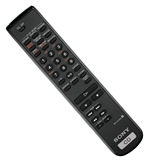Sony SCD-CE775 Five-Disc SACD Player Page 2
 As I've said many times, one of the easiest ways to realize the benefits of SACD, and high-rez audio in general, is to listen to the high frequencies. Mr. Davis has been known to play a pretty mean trumpet every now and then, and the approachability of his unbelievable sound was unmistakable on the high-rez track. Gone were the harshness, the ringing, and the piercing sensation that make you want to turn the volume down. In their place was a sound that was obviously still high in pitch, but rich and natural without any sense of fatigue. This naturalness and consistency hold form throughout the frequency range, and it brings me back to the first thing I always tell people when they ask me what SACD sounds like: It sounds like music. Many think I'm being a wise ass at first; however, when they think about it for a moment, they realize what I'm really saying. When we listen to live music (in the right setting, mind you), we hear texture and depth, balance and separation, dynamics, tonality, and (most importantly) the instruments and voices exactly as they were meant to be heard. Even an inexpensive SACD player like the SCD-CE775 will re-create that experience more faithfully than most people have ever heard from a consumer-audio source. Kind of Blue obviously finds its way onto SACD from less-than-pristine masters; even here, though, the difference in timbre, naturalness, and soundstage was remarkable.
As I've said many times, one of the easiest ways to realize the benefits of SACD, and high-rez audio in general, is to listen to the high frequencies. Mr. Davis has been known to play a pretty mean trumpet every now and then, and the approachability of his unbelievable sound was unmistakable on the high-rez track. Gone were the harshness, the ringing, and the piercing sensation that make you want to turn the volume down. In their place was a sound that was obviously still high in pitch, but rich and natural without any sense of fatigue. This naturalness and consistency hold form throughout the frequency range, and it brings me back to the first thing I always tell people when they ask me what SACD sounds like: It sounds like music. Many think I'm being a wise ass at first; however, when they think about it for a moment, they realize what I'm really saying. When we listen to live music (in the right setting, mind you), we hear texture and depth, balance and separation, dynamics, tonality, and (most importantly) the instruments and voices exactly as they were meant to be heard. Even an inexpensive SACD player like the SCD-CE775 will re-create that experience more faithfully than most people have ever heard from a consumer-audio source. Kind of Blue obviously finds its way onto SACD from less-than-pristine masters; even here, though, the difference in timbre, naturalness, and soundstage was remarkable.
Let's not forget SACD's other major advantage over conventional CDs: multichannel capabilities. In a move that probably makes a lot of sense, Sony started their SACD line with stereo-only players to muster support for the format among audiophiles and then set their sights on the masses with players that bring the advantages of high-resolution and multichannel audio. I like a lot of what I've heard so far from the SACD surround mixes, considering that much of this material was originally recorded for two-channel playback. Right now, we're seldom able to hear what multichannel is fully capable of when performances are miked and recorded specifically for surround. Much of what I heard in the rear channels of Bob Mintzer Big Band's Homage to Count Basie and Gaudeamus' performance of The Sacred Feast was pure ambience. It's good to see that the mix engineers are resisting the temptation to participate in the sonic gymnastics that I've heard from other multichannel music (or multichannel-music modes)—with sounds bouncing around from speaker to speaker and such. With the Sacred Feast disc, the SCD-CE775 did a particularly nice job of re-creating a realistic acoustic experience. If you're like me, you haven't spent much time in a cathedral. So, if you want to know what one sounds like when it's full of beautiful voices, give this disc a spin. The Basie tribute was also excellently managed, with the front speakers doing the bulk of the work and a subtle (but noticeable) contribution from the center and surround speakers that filled out the stage nicely without calling undue attention to itself.
The peripherals are about what you'd expect from an entry-level player. This is not my favorite Sony remote, but it gets the job done. I can't tell you much about the manual, as I got a copied, faxed, wadded-up, and faxed-again version with my review unit and couldn't make much of it. What I could decipher appeared comprehensive. As I said before, the ergonomics could be worse, considering you have to do everything from the remote and the front panel. Oh, how quickly we've been spoiled by onscreen menus.
Those of you who are holding out on SACD because of price are losing ammunition fast. I'm not going to tell you that Sony's SCD-CE775 will unveil everything that the format has to offer. Still, at $400, it does a hell of a job of proving that the difference between CD and SACD is something you really ought to know about. A digital-audio upgrade has been a long time coming, and it's finally here. The question now is, what are you going to do about it?

Highlights
• SACD for $400
• Multichannel or two-channel high-rez playback
• Solid performance with conventional CDs, as well
- Log in or register to post comments






























































